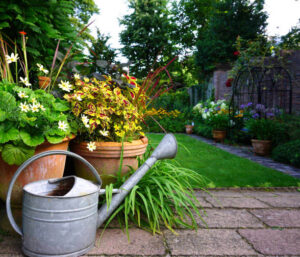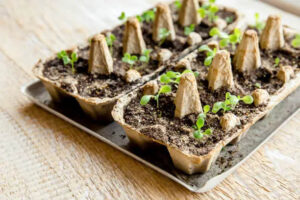Garlic, a member of the lily family alongside onions, leeks, and shallots, is a versatile and flavorful addition to any kitchen garden. Cultivating garlic is relatively straightforward and can yield rewarding results with proper care and attention. This guide will provide you with all the necessary steps to grow garlic successfully, from planting to harvesting.
Choosing the Right Location
Garlic requires full sun to develop properly. Select a spot in your garden where the sunshine hits all day. This ensures the garlic bulbs receive the energy they need to grow robustly. Adequate sunlight is crucial for the photosynthesis process, which helps the plants grow strong and healthy.
Preparing the Soil
Success in growing garlic starts with good soil. Garlic thrives in nutrient-rich soil with a consistent texture. Here’s how to prepare your soil for planting garlic:
- pH Level: The ideal pH level for garlic soil is between 6.0 and 6.8. You can test your soil’s pH using a home testing kit or by sending a sample to a local agricultural extension office. If the pH is too low (acidic), add lime to raise it. If it’s too high (alkaline), sulfur can be added to lower it.
- Fertilization: Use a balanced fertilizer mix, such as 10-10-10 or 5-5-5, to enrich the soil with essential nutrients. Work the fertilizer into the soil about a week before planting. This will ensure that the nutrients are well-distributed and available for the garlic cloves as they start to grow.
- Soil Texture: Garlic prefers loamy soil that drains well. Heavy clay soils should be amended with organic matter, such as compost or well-rotted manure, to improve texture and drainage.
Planting Garlic

Garlic is typically planted in the fall and harvested in the spring. Here’s how to plant garlic for optimal growth:
- Depth: In cold climates, plant cloves 2-4 inches deep. In warmer climates, plant them 1 inch deep.
- Spacing: Plant cloves 3-5 inches apart with 18 inches between rows.
- Planting: Place each clove in the soil with the pointed end facing up. Press the clove into the soil and cover it gently.
Garlic cloves sprout quickly, sometimes within three days, but the growth process has just begun.
Watering
Proper watering is crucial for garlic growth. Here’s how to ensure your garlic plants get the moisture they need:
- Initial Watering: Water the newly planted cloves for the first three days to keep the soil moist. This helps the cloves establish roots.
- Ongoing Watering: After the initial period, water the garlic every few days. Consistent watering is essential during the growth phase. However, be cautious not to overwater, as waterlogged soil can lead to rot. The soil should be moist but not soggy.
Pest Management

Garlic is resistant to most pests and can act as a natural deterrent for neighboring crops. However, there are a few things to watch out for:
- Onion Maggot Larvae: These pests can damage garlic cloves. If you notice leaves dying prematurely, inspect the cloves for larvae. If infested, discard the affected plants to prevent the larvae from spreading.
- Natural Deterrent: Garlic itself acts as a pest repellent for many common garden pests. Planting garlic near other crops can help protect them.
Harvesting Garlic

Garlic has a way of indicating when it’s ready for harvest. Prevent flowering by breaking off the flower stems, as flowers divert energy from bulb development. When the tops of the stalks start to turn brown, it’s time to harvest. Here’s how to harvest garlic:
- Harvesting: Avoid yanking the garlic out of the ground, which can cause breakage. Instead, carefully dig around each bulb.
- Cleaning and Drying: Brush off any loose dirt from the bulbs and leave them to dry in a well-ventilated area at room temperature.
Storing Garlic

Proper storage of garlic ensures that it remains fresh and usable for months. Here are the steps and considerations for storing your garlic:
- Drying: After harvesting, allow the garlic bulbs to dry for several weeks in a well-ventilated area. This process, called curing, helps to toughen the skin and enhance storage life. Ensure the bulbs are kept in a dry, airy location away from direct sunlight.
- Trimming: Once the bulbs are fully dried, trim the roots and cut the stems to about an inch above the bulb.
- Storage Conditions: Store garlic in a cool, dry place with plenty of air circulation. Ideal storage locations include mesh bags, hanging bundles, or perforated baskets. Avoid storing garlic in plastic bags or airtight containers, as this can cause moisture buildup and lead to rot.
- Temperature and Humidity: The optimal temperature for storing garlic is between 60-65°F (15-18°C) with low humidity. Excessive humidity can promote mold growth.
Popular Garlic Varieties

There are many varieties of garlic, each with unique characteristics. Here are some popular options to consider for your garden:
- Northern White: Known for its large size and easy-to-peel cloves, this winter-hardy variety has a strong flavor. The bulbs have white skins and reddish cloves.
- Early Asian Purple Skin: Popular in China and well-suited for southern climates, this variety features purple skin and is known for its robust growth and flavor.
- Italian Purple: Characterized by white skin with purple stripes, this garlic is easy to peel and has a spicy, biting flavor. It’s a top choice for many gardeners and cooks.
- Spanish Rojo: With its reddish skin, this garlic is tasty, easy to peel, and a good keeper. It’s a versatile choice for various culinary uses.
- German Red: This variety features light brown cloves with a slight purplish hue. It has a hot and spicy flavor, making it a favorite for those who enjoy a bit of heat.
- Gilroy California: Large and easy to peel, this variety has a soft neck, making it ideal for braiding and long-term storage.
- Silver Skins: Often grown for braiding due to its soft neck, this garlic is aesthetically pleasing and practical for storage.
Each of these garlic varieties offers distinct benefits and flavors, allowing you to choose the best ones for your garden and culinary needs.
Growing garlic is a rewarding endeavor that can be accomplished with a bit of care and attention. By choosing the right location, preparing the soil, planting at the correct depth, watering consistently, and monitoring for pests, you can enjoy a bountiful harvest of flavorful garlic. Experiment with different varieties to find the perfect garlic for your garden and culinary preferences. Happy gardening!
Interested in Learning About Other Root Vegetables:










